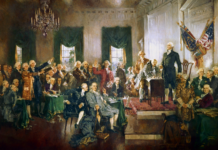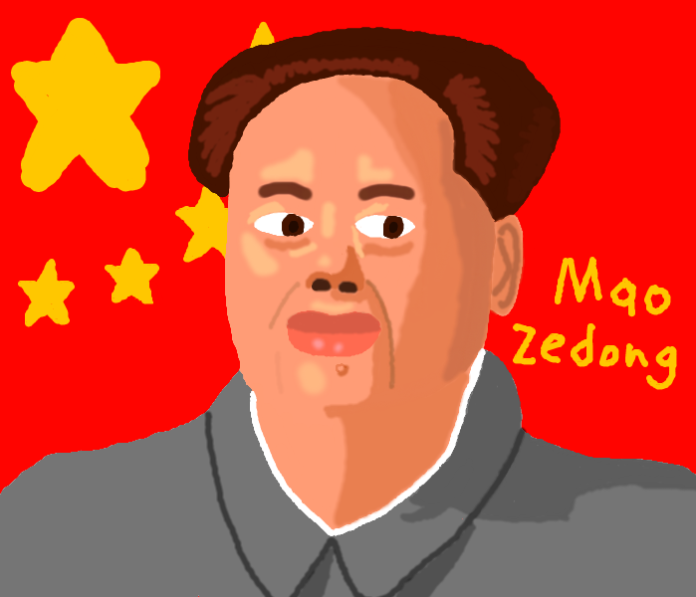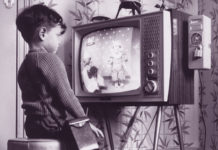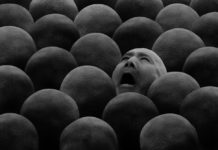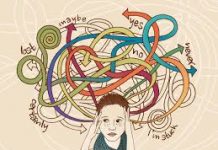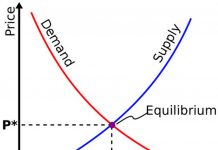Any American who is aware of the nation’s extenuating circumstances can see the blatant leftist propaganda on display in almost any television show. It started in a very innocent, humorous manner, with shows like Everybody Loves Raymond. The main male character, Ray, looks like an idiot in almost everything he does. Did you ever stop to wonder why a professional sportswriter couldn’t pronounce the word stomachache? Not only was he a complete moron, incapable of handling stress in the most common scenarios, but his father, a Korean War vet, was a brute and a disgusting pig. An accurate reflection of what the left thinks of the American male, to be sure. It made for entertaining television, but it also served a function that went unnoticed by most people because they easily brushed it off as comedy. A function meant to present a distinct reality and shift people’s thinking towards a different morality. Entertainment media and programs like Everybody Loves Raymond, are very similar to the methods of thought reform used in Communist China over seventy years ago. While this may seem to be a fantastical claim based on conspiracy theory and speculation, the methods used in China are well documented, and the powers that be have had many decades to refine and perfect them.
As subtle as they were, it was still obvious to viewers that Ray and his father had right-leaning political views. The producers wasted no time in contrasting these views with what they wanted to portray as correct thinking. The best example is the episode where Ray’s two boys wanted to play fairies in the school play. Ray was fine with it at first until his bigoted father suggested it may mean his boys are homosexual. Ray then did everything in his power to convince his boys to be anything other than a fairy, even if it meant just sitting under a prop and pretending to be a stone. The contrast between social values becomes apparent when Deborah, Ray’s wife, chimes in and suggests that Ray often pretends to be a liberal, but his true bigoted fears are showing over this issue, because of his father’s influence. Ray responds by saying there is such a thing as being too liberal. We all know that’s true. As funny as this episode was, with Frank’s usual sarcasm and the constant bickering between husband and wife that we are all familiar with, the ultimate moral of the story was Ray’s attitude change. The entire episode was meant to persuade viewers to change their own thoughts and attitudes to be more in line with what the left considers correct thought.
In the book Brainwashing in Red China, by Edward Hunter, thought reform is examined through the interviewing of several people who experienced it first-hand. The Chinese built their methods by following in the footsteps of the Soviets, who used torture to obtain false confessions. Communists in China adopted a more refined approach through social isolation, self-criticism, and peer corrections. In my article Critical Race Theory as a Means of Coercive Thought Reform, for example, I discuss the method of self-criticism and how I experienced this as a student in a social work program in relation to white privilege education. Students were required to write a paper on their thoughts about their own white privilege, and how they didn’t realize their hidden attitudes about race were affecting others. I was told I was not fit for this program because I didn’t have correct thinking that aligned with Critical Race Theory. I watched in absolute astonishment as my peers stood in front of the class and stated they didn’t realize how racist they were until writing this paper. There is a great deal of research that has been done showing that self-criticism through writing is a great way to change attitudes and reform incorrect thinking, but that is beyond the scope of this article.
Getting back to the main point, the Chinese Communists, attempting to persuade people towards Communist thinking, ran a national play called The Question of Thought. It was all fictional but based on the reality that if it appeared to mimic everyday life, people would believe it. There is evidence with media communications that people are likely to believe a news story if it is something that they have been repeatedly exposed to. Movies about pandemics leading up to Covid-19 are a good example. In shows like Everybody Loves Raymond, there are scenarios depicted that mimic everyday life regularly. When presented as an official story, the idea is more believable because it penetrates consciousness. The play The Question of Thought itself depicted several fictional scenarios that used a thought reform process much like the Delphi technique, where thoughts and beliefs were guided to predetermined conclusions. Its purpose was to show that non-communist thinking was wrong and reforming oneself through self-criticism and confession of anti-communist beliefs was praiseworthy and the path to social acceptance. This is what happened in the episode of Everybody Loves Raymond. Ray’s thinking about his sons being fairies or even homosexual was wrong and bigoted. Through the process of self-reflection, he reforms his thinking and is now acceptable.
“An expose, of course, was not the intention of the play’s authors or sponsors, just the contrary. Their intent was only to extend the field of indoctrination—brain-washing—beyond the classroom and out to the public in general. They did an extraordinarily good job in this. In fact, they succeeded so well that by studying this propaganda play the observer can obtain a liberal education in how Chinese Communism actually manipulates the people, and focuses their efforts, as faithful and obedient disciples of Russian Communism, on a world crusade for war against the United States.” (Hunter, 1951, p. 114)
Another successful technique the Chinese employed was creating the perception in non-communist countries that it was, in fact, already a communist country. This is beyond the scope, to a degree, of comparing The Question of Thought to modern television programming, but there is a relationship. It is beyond the scope because this tactic involved highly trained “action units,” using terrorism tactics, to force people into compliance and go along with communist aims. In other words, it was the creation of an environment where people were afraid to go against the communists. B.F. Skinner states in Beyond Freedom and Dignity that a great deal of social control can be exerted through manipulation of the environment and the fear of being socially isolated. In our public schools today, Critical Race Theory is being used to shape the thoughts and beliefs of our children, while at the same time, using techniques like self-criticism and social isolation to either get them to go along or keep silent out of fear of disapproval. Another interesting point Skinner makes in his book is that thoughts and beliefs are not as easily controllable, or changeable, as a behavior. This is because people can resist. Behavior is controllable because people can be made to feel their beliefs or thoughts aren’t accurate or popular, and because we are social creatures, we have a tendency to conform. Many studies, like the well-known Asch experiments, show that most people will conform to the crowd’s beliefs, even when they know they are wrong. This is something evident today as well. Interestingly, the Chinese made a similar observation. They knew that core beliefs were not likely to be changed, but that creating an environment where people were afraid to act on them was enough to carry out their immediate objectives.
“The Communist hierarchy knows, as did Lincoln, that you can fool all the people only some of the time. But in the calculations of power politics, if people can be fooled just long enough for the Party to put its objective across, that is sufficient. No more is necessary.” (Hunter, 1951, p. 146)
The relationship between this tactic and television programming, however subtle, is best explained by saying that a correct version of morality is being presented, and like The Question of Thought, a process of self-criticism and reflection is shown, as a character develops their thinking to reflect this morality. While the Chinese used direct action units to instill terror in the hearts of those that refused to go along, a more refined approach is used today. In the episode of Everybody Loves Raymond, Deborah’s position is unarguably presented as the correct one, and because Ray is depicted as changing his attitude, a national environment was created where people were unsure about their own positions and unwilling to stand up for their values for fear of social criticism and appearing to be on the wrong side. At least, this was the intent of the show, a national attitude change on the issue of homosexuality. Another example of this is Barack Obama’s views on homosexual marriage. As a candidate, he claimed to be opposed to the issue because the public was not ready to accept it. As president, he claimed his views have grown, hoping America would see him as an enlightened thinker and change their views with him. This is all theoretical, of course, but the evidence and the relationship between modern television programming and the Chinese play are indisputable. Whether it is having the desired effect is debatable. One thing is for certain, propaganda and attempts to persuade American thoughts into accepting socialism cannot be resisted without having a thorough understanding of how thought reform, or “brainwashing” works. That requires study, something that many Americans seem unwilling to do.




